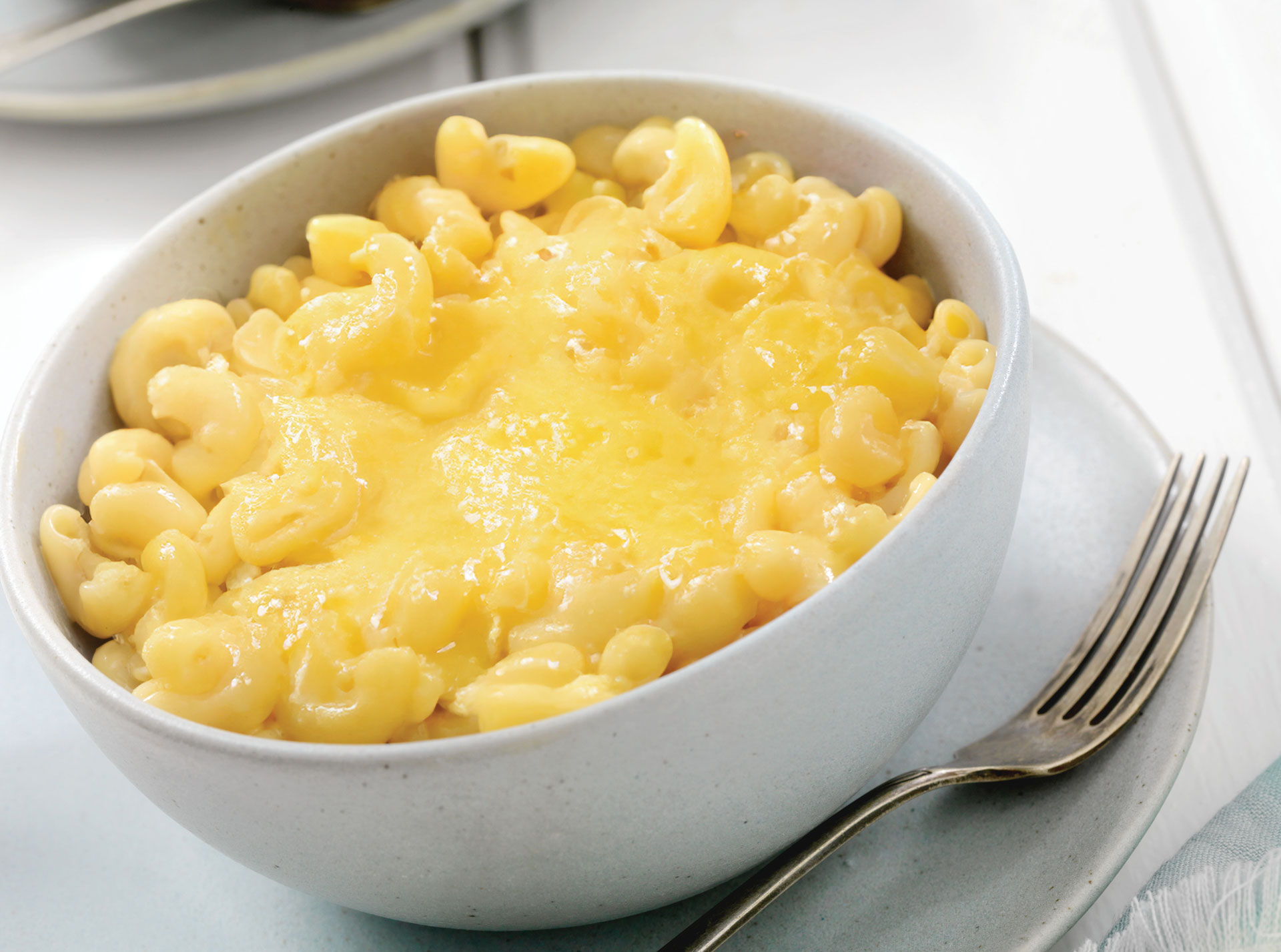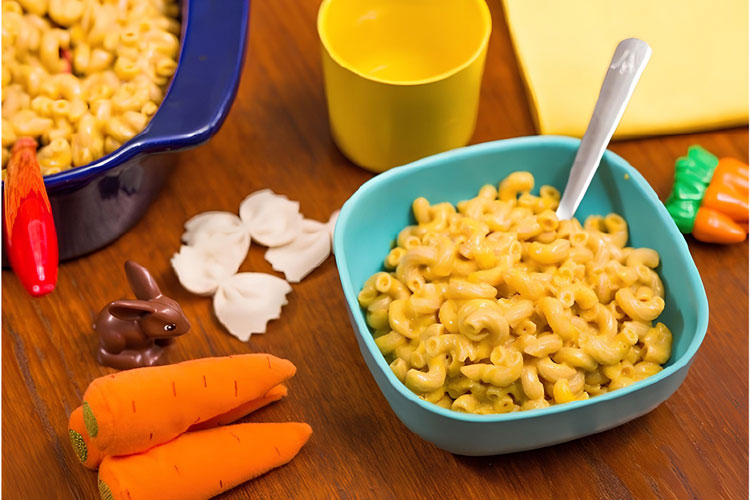
Creamy Carrot Mac and Cheese
- Home
- Live Well Blog
- Creamy Carrot Mac and Cheese
October 2, 2024
Recipes
Oooey-gooey cheesy goodness AND there’s even a veggie?! This recipe is perfect for parents with little ones and makes for great leftovers too.
Ingredients:
- 3 cups shredded carrots
- ½ cup water
- 5 tablespoons orange juice
- 3 cups whole wheat pasta
- 1 cup cheddar cheese, shredded
- Salt and pepper to taste
Directions:
- Cook pasta according to package directions. Drain pasta, but leave a little water in the saucepan. Set pasta aside.

- Using the same saucepan used to cook pasta, add carrots, ¼ cup water, and orange juice. Cook on high heat until water comes to a boil.
- Cover and reduce heat to medium. Cook for 15-20 minutes, or until carrots are very soft. Remove from heat and cool for 10 minutes.
- Puree the carrot mixture in a blender until smooth, adding ¼ cup water at a time until desired thickness.
- Combine the pasta and carrot mixture in the saucepan. Stir in cheese and cook over medium heat until completely melted.
- Add salt and pepper to taste.
Tip!
Cook once, eat at least twice by doubling this recipe and freezing half. Reheat the frozen portion on a day when you’re short on time or energy to cook.

A note on “hiding” or “sneaking in” veggies
Many recipes, just like this one, use vegetables that are shredded, minced, or blended into the dish. This can add flavor, texture, and nutrients. Your child may not notice vegetables are in there, which is okay, but this is different than purposefully “hiding” vegetables in a dish to trick them into eating them. “Hiding” or “sneaking in” vegetables without letting your child know is not recommended and can backfire. It’s best to be honest with your child about what is in the foods they’re being offered. Your child will learn to trust you, which helps create a positive feeding relationship.
Nutrition Info:
Servings: 4
Per Serving:
- Calories 382 kcal
- Carbohydrate 69 g
- Protein 19 g
- Total Fat 7 g
- Saturated Fat 4 g
- Trans Fat 0 g
- Cholesterol 15 mg
- Fiber 8 g
- Total Sugar 8 g
- Sodium 284 mg
- Calcium 251 mg
- Folate 47 mcg
- Iron 3 mg
